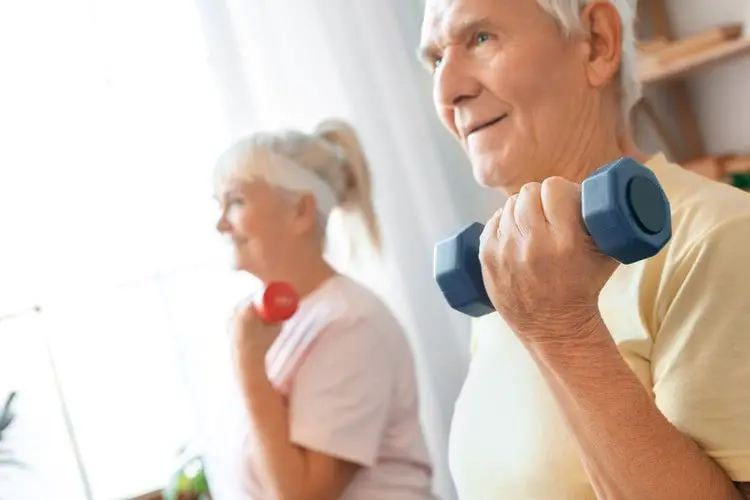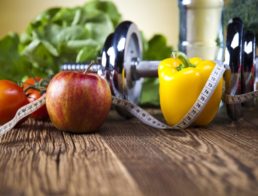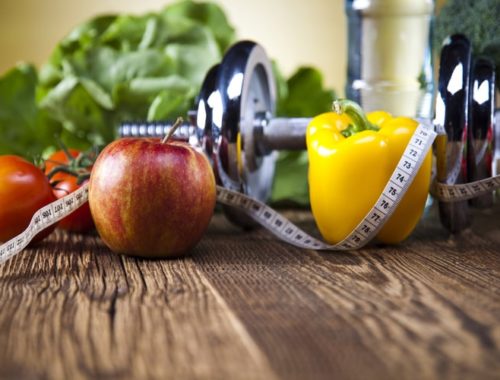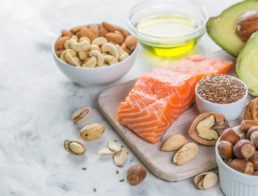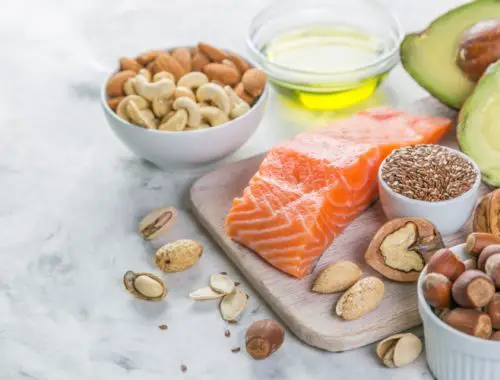In an ideal world, exercise and overall fitness will be a priority throughout life. Movement and physical activity is important throughout all stages, but for those over 70 there are certain elements that become of even greater importance. While those who led an active life in earlier years will usually have an easier time incorporating exercise with age, it’s entirely possible to start an effective and safe fitness program later in life.
One reason that building muscle after age 70 is so crucial is the fact that falls are the number one cause of hip fractures and traumatic brain injuries for seniors. Frighteningly, falls also cause a number of fatal injuries each year, as well. In many cases, older adults are more prone to injuries and typically face slower recovery times, which can impact independent living, driving and other daily tasks.
Continuing or adopting a regular fitness plan is one key foundation of aging with grace, especially one that ensures you build and maintain muscle mass. Improved coordination, balance, strength, bone density and a lowered risk of falls are all next on the list of important reasons to workout after the age of 70.
The intensity and type of exercise will differ from person to person, depending on fitness level, medical history and injuries (just like with anybody, regardless of age). Of course, working with a professional is a great idea, if possible, but definitely not necessary. Here are ten ways to build muscle after age 70 and stay healthy, strong and fit.
Strength Train
Strength training (also referred to as weight listing of resistance training) is key for building muscle after age 70. Incorporating strength exercises can prevent muscle loss associated with aging and improve bone strength, along with helping you to maintain an upright posture (more on why this is so important in a moment). Building muscle helps to carry out daily activities with a lesser risk of falling or injury. This isn’t age-specific, but it’s also a nice bonus that muscle actually raises your resting metabolic rate (RMR), meaning you’ll burn more calories while at rest.
Below you’ll find a list of specific strength-based movements to build muscle after age 70.
Incorporate Balance
Building muscle goes hand in hand with improving balance, and better balance goes hand in hand with injury and fall prevention. Great options include Tai Chi, gentle yoga, swimming and (safely) walking or hiking on uneven terrains. Exercises you can do at home or at the gym include a simple one leg balance, heel to toe walking, single leg balance with arm reach, back and side leg raises and wall push-ups. All of these movements can be viewed on youtube to learn proper form.
The Bosu Ball Balance Trainer is an excellent tool you can have at home to improve balance.
Maintain Proper Form
On the topic of proper form, this becomes that much more important after the age of 70. But whatever your age, exercises carried out with proper form is the key to avoiding injury. If you’re unsure of how to execute exercises, you can ask for help, look online, or (if you belong to a gym) ask one of the trainers working on the floor for pointers. It also might be well worth it to hire a personal trainer for just one or two sessions to learn proper form, especially if you are new to strength training.
Work on Stability
Stability and balance are closely related, but there are a few specific exercises you can do to improve your stability and risk of taking a fall.
Ankle stability exercises are important for ankle strength and stability, which can be a major contributor to falls or stumbles when walking. Check out this video from some different alternatives on how to incorporate important ankle strengthening and mobility exercises into your routine.
Keep Up With Cardio
Similarly to any other time in life, it’s important along with muscle building exercises to keep up with your cardio routine, as the two components of a well rounded fitness plan are cardio and strength. After 70 the types of cardio exercise you do might change, but there are still many wonderful options such as swimming, walking, elliptical, gentle hiking, yoga, cycling, aerobics and at-home workout videos. Shoot for the CDC recommended 150 minutes per week minimum, which breaks down to 22 minutes per day.
If you can afford the investment, having an elliptical trainer at home is an incredible way to safely get in your daily cardio. Especially if you live in an area where getting outside is difficult, and there aren’t many gyms around, or you’re not a gym person.
Wear Good Shoes
To reduce the risk of falls or tripping during exercise, opt for leather soled shoes, if possible. Rubber soled shoes might be more slippery and less stable. Many people love the Saucony Echelon for a good quality walking shoe, and you can also visit your local sporting goods store and have your gate analyzed for a more personalized approach.
Walk
Walking is a basic movement that is one of the best types of exercise for those over 70. Going for daily walks can make a huge difference in staying fit, and a postprandial walk (after eating) has been shown with better blood sugar control.
Pair Exercise with Good Nutrition
Nutrition is just as important for those over 70, as it is key for bone health. Particularly eating foods high in vitamin D and magnesium are helpful, although check with your doctor if you are taking blood thinning medications.
Focus on Posture
Keep your core muscles engaged, and your posture aligned throughout the day and when performing exercises. This means focusing on keeping your head over your shoulders (not jutted forward or leaning back), your shoulders over your hips, and hips over your feet. This will also greatly improve stability.
Play
Exercise certainly doesn’t need to be confined to a gym, so if you have grandchildren or any other reason to play, take advantage! Playing catch, getting down on the floor to play, dancing and any other fun activity most definitely adds up at the end of the day. This form of movement isn’t only good for maintaining muscle mass, but also is such an important piece of mind-body health.
Now, here are a few specific exercises to select for muscle-building movements if you’re unsure of where to begin:
Partial or full squat
For many people over the age of 70, a full squat is likely to be difficult, but a partial squat can provide the same benefits. Squatting works to increase hip flexibility, strengthen quadriceps and hip flexors, and is a great exercise for overall joint mobility. It can make daily movements like climbing stairs, walking and sitting much easier.
Bicep and tricep curls
These exercises will help with general arm strength, making it easier to pick objects up and carry them without risk of injury. Both can be done seated or standing, and a light dumbbell (5 lbs) is good to start with. Increase the weight if and when necessary to still feel challenged.
Shoulder press
The basic shoulder press is important for many daily movements, and life will certainly be easier with increased shoulder strength and mobility. Lifting and reaching for objects, passing food across the table and holding your grandchild are all movements that require shoulder strength.
Remember, whether you are bran new to exercise after 70 or have worked out your entire life, you will reap important and necessary benefits by building muscle. Seek out a qualified personal trainer if possible, and be sure to always pick exercises that do not cause any major pain or discomfort. At the end of the day, building muscle is one of many ways to live longer and feel better.
